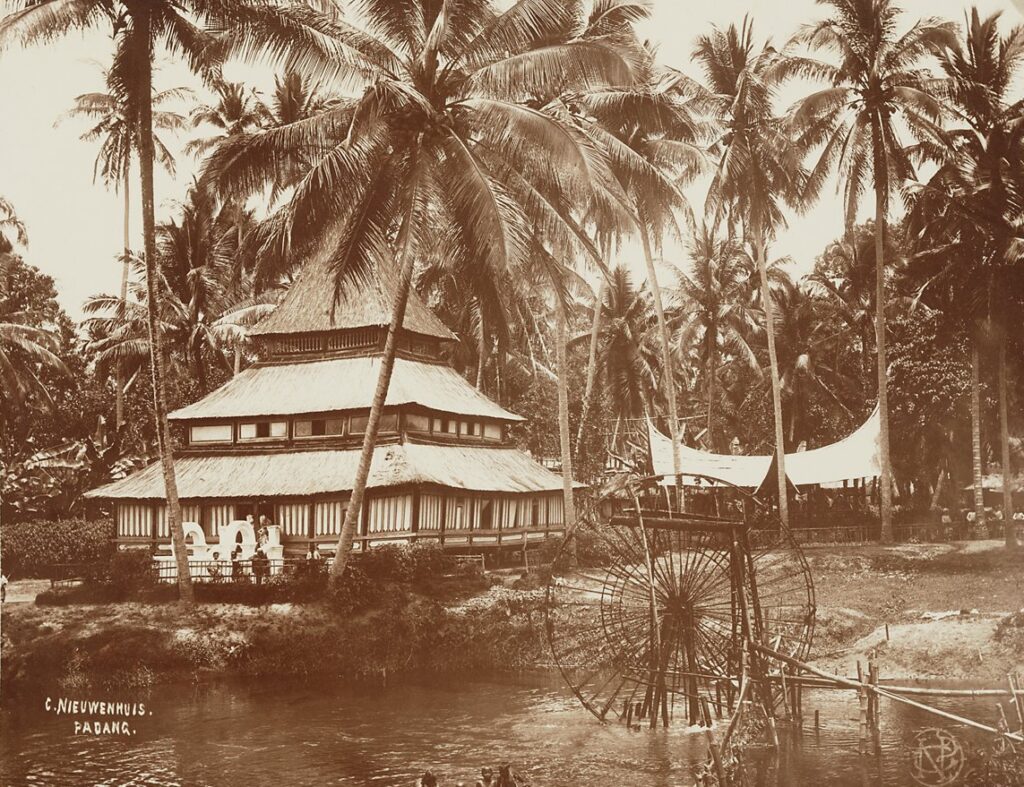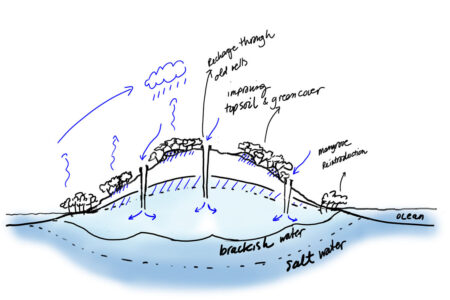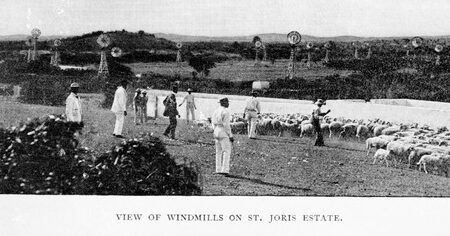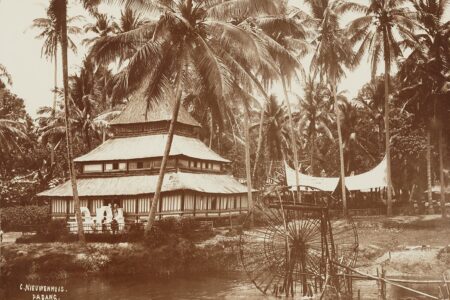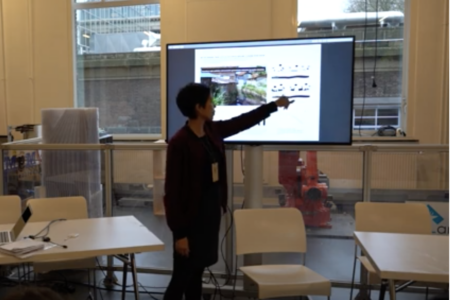It’s quite hard to make a selection but to me these (predominantly female) experts and their works on the value and potential of traditional water systems are definitely worth reading and following.
Working on the Thirsty City research-project since 2015 I have encountered many interesting perspectives on the value of traditional water systems. I have selected the works and experts for the diversity of their perspectives on water. I think it is no coincidence that ‘wett’ countries such as India and the Netherlands or ‘dry’ countries such as Iran bring forth new or even unusual perspectives on water. As I am currently investigating the historical water resource management systems of Curaçao I have also made a ‘must read’ list for Caribbean water systems which can be found here.
1. Springs Of Life, India’s Water Resources
by Vasudha Pangare, Ganesh Pangare & Banayak Das (2006)
I first encountered the work of Vasudha and Ganesh Pangare through their article Ancient Water Wisdom: Traditional water systems India (2015) where they present a systematic overview of traditional water systems of India in 2015. Intrigued by their approach I bought their book Springs Of Life, India’s Water Resources (2006). In this work the authors study and analyse the relation between traditional water systems and their social, cultural, geographical context and regional climate. The role of the people and communities developing, constructing and managing the water system, most often women, is explicitly highlighted. With her research Vasudha Pangare has often raised awareness on gender-issues and watershed development. Although the authors admit that the traditional systems are not able to meet current water demand their investigations objective is “to raise awareness of the systems and the communities and ecosystems they serve and may serve as inspiration for the future”. For spatial planners and designers their works offer a wealth of knowledge on many aspects of water systems but, as the authors are water resource experts and environmentalist, their study gives insight on but not explicitly focuses on the spatial aspects. Something the following work does explore in depth.
2. Water Shapes, strategie di valorizzazione del patrimonio culturale legato all’acqua
by Laura Genovese & Heleni Porfyriou (2012)
In 2016 Heleni Porfyriou presented this project at the symposium Conference Water & Heritage for the Future organised by ICOMOS en TU Delft. I was immediately taken by the approach. The European Interregional researchproject ‘Water Shapes’ (from 2007-2013) is an invaluable study with a primary focus on the physical shape of historical water systems, artefacts and their usage. The aim of this collaborative project between scholars from Italy, Spain, Portugal and France collaborated was to “create a systematic approach for enhancing knowledge relative to architectural artefacts related to water, by a thematic database..” and to “ increase awareness at European and extra-European level of the need to preserve and enhance tangible and intangible heritage assets connected to water because “climate change and growing scarcity of water makes it unceasingly urgent to reflect on the fundamental role of water sources… not only concerning its use but also its cultural and artistic significance” (Genovese & Porfyriou, 2012). Heleni Porfyriou is a.o. a senior researcher at the National Research Council of Italy).
3. Design in the Terrain of Water
by Anuradha Mathur & Dilip da Cuhna (2014)
A whole different and radical take on water, as just one of the many manifestations of wetness, is introduced in the body of work by Anuradha Mathur and Dilip Da Cunha (landscape architect and architect respectively). Mathur and Da Cunha rather speak of different states of wetness, be it clouds, fog, rain or liquid and reject the formal division of water and land and with it the notion of static waterbodies. In their latest publication ‘The Invention of Rivers’ Da Cunha argues that the “colonisation” of water by geographers has forced the substance of water into waterbodies and formal shapes and has led to the artificial, and in their opinion destructive, division of water and land meanwhile ignoring the hydrological cycle and natural dynamics of the context. Definitely something to chew on… Anuradha Mathur is Professor in the Landscape Architecture Department at the University of Pennsylvania. Dilip da Cunha is currently Adjunct Professor GSAPP at Columbia University.
by Sara Nourikia & Narjes Zivdar (2021)
Much has been said about the ancient underground water extraction system of Qanats. But I think this study definitely adds a valuable perspective. It’s easy to forget that with any water system there are actual people and communities involved, dependent and often indispensable for their functioning. With optimisation, centralisation and/or commodification of water systems the community based water management principles are often forgotten or shoved aside, weakening the system and its (social) sustainability as a result. Sara and Narjes have studied and mapped “the transformation of the key urban water stakeholders from past to present(…)based on their roles and influence on decision making process for the management”. Sara Nourikia is a researcher at the Department of Urban Planning Shahid Beheshti University Tehran. Narjes Zivdar is a researcher at Bartlett Development Planning Unit University College London.
5. Empire and ecology in the Bengal Delta: The making of Calcutta
by Debjani Bhattacharyya (2018)
I met Debjani Bhattacharyya during a workshop she led on water heritage organised by Prof. Carola Hein at the TU Delft in 2019. During and after the workshop I was able to discuss my project Thirsty Cities with her. Debjani highlights the problematic nature of ‘property-thinking’ the transfer of public goods (such as water resources and water bodies) to capitalist and/or colonial bodies. This aspect is fundamental in understanding the condition and state of our waterscapes, water sheds and water systems today. Her work has shaped my way of thinking in the Thirsty Cities Curaçao research. In the colonial era the commodification and confiscation of the islands water resources to the Dutch West Indies Compagnie (DWIC) and later to the Curaçaosche Petrolium Maatschappij (CPM) was standing practice. This has led to exploitation and mismanagement of the scarce fresh water resources and unfair distribution of water supply to its marginalised communities and subsistence small farmers. In her work Debjani Bhattacharyya, an Associate Professor of History at Drexel University in Philadelphia, explores the intersection of legal and environmental history.
by Inge Bobbink (2017)
Last but not least! Inge is my colleague and co-author of the book Water inSight in which we explored the characteristics of the dutch polders. But that was just a tiny appetizer for her monumental dissertation on the Landscape architecture of the Polder-boezemsystems. “This dissertation concerns the polder-boezem system, a water system that was created by trial-and-error, has been adapted continually and now needs to be expanded to cope with the effects of climate change. The research focuses on answering the following question: What potential does the current polder-boezem system have, with the help of landscape architectonic design, to define (or redefine) the spatial identity of the lowlands?”. Inge Bobbink is asssociate professor at the Faculty of Architecture and the Built Environment Delft University of Technology, Delft, the Netherlands.
Acknowledgments
Through the workshops, symposia and publications on water heritage initiated and organised by Carola Hein, Professor and Head, Chair History of Architecture and Urban Planning at Delft University of Technology, I was introduced to the works of some of the authors mentioned above. Through sharing her knowledge and network Carola has definitely helped me move forward with my research.
